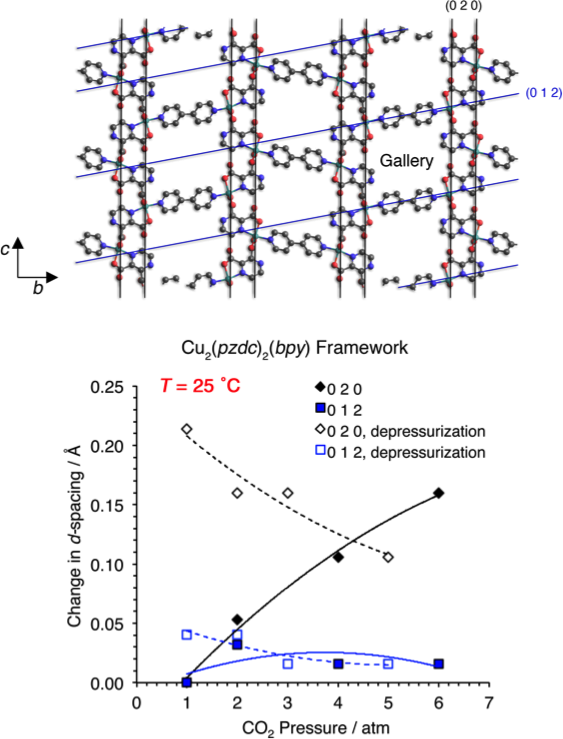In a recent publication resulting from a collaboration between the IRG2 of the Wisconsin MRSEC and the University of Puerto Rico Mayaguez through the NSF-sponsored Partnerships for Research and Education in Materials (PREM) program, Prof. Hernandez-Maldonado and coworkers investigated the structural mechanisms of the hysteretic adsorption of carbon dioxide onto the porous coordination polymer, CPL-2. CPL-2 is currently under investigation for industrial-scale carbon dioxide capture applications. The c-b plane of the CPL-2 lattice contains an array of one-dimensional channels that facilitate the adsorption of carbon dioxide by allowing rapid transport of gas molecules. Diagonal blue lines indicate the (0 1 2) diffraction plane. Adapted from K. Riascos-Rodriguez et al., Dalton Trans. 43, 10877 (2014), with permission from The Royal Society of Chemistry.

